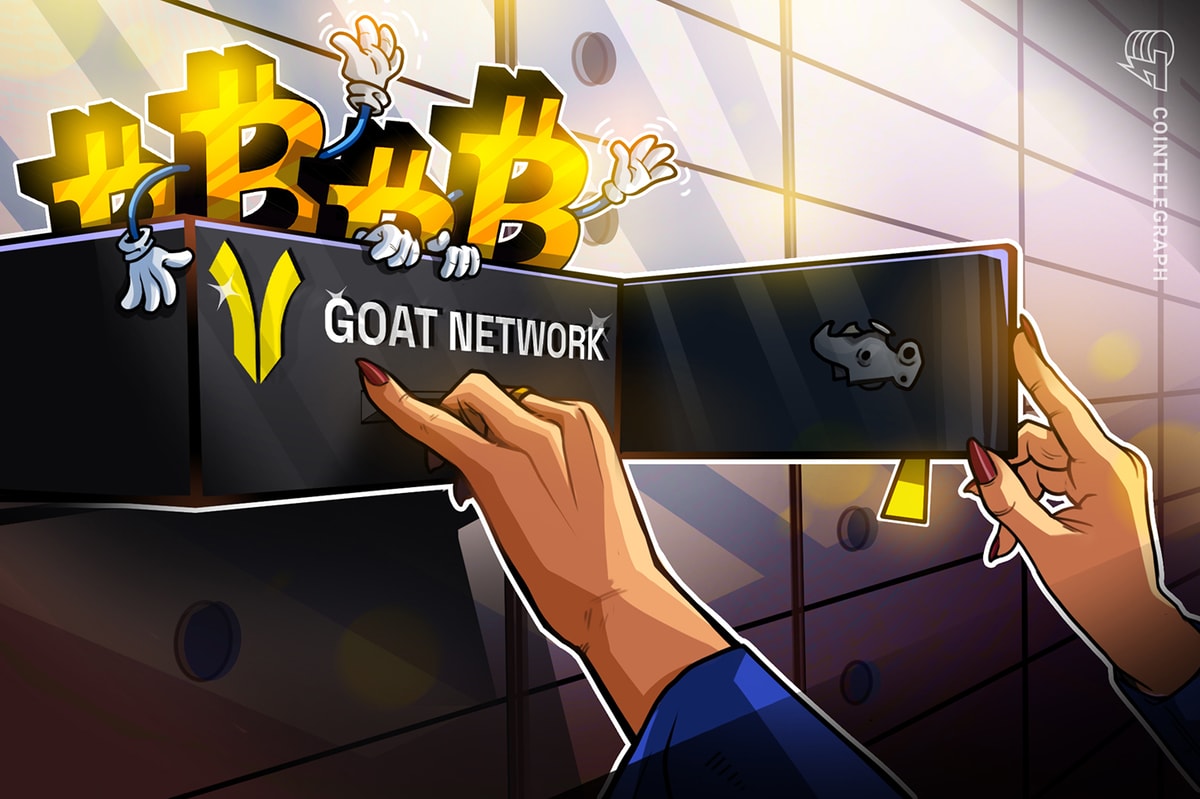Bitcoin needs L2s to scale — AMA recap with Goat Network

Layer 2s are essential for Bitcoin’s growth: that was the central message of the recent AMA with Kevin Liu, Goat Network co-founder and CEO. Speaking right after the Korea Blockchain Week, he explained why scaling Bitcoin natively matters and how his team spent more than two years building the foundations.
Join us on September 24 for an AMA with @GOATRollup – we’ll explore why Bitcoin security, miners, and stakeholders all depend on L2s to thrive, and how GOAT Network is building the future of Bitcoin-native applications.
🕒 10 AM EST
[Brought to you by @GOATRollup] pic.twitter.com/Xj2bAGzYWE
— Cointelegraph (@Cointelegraph) September 23, 2025
The journey began in early 2023, when Goat’s research team started experimenting with zero-knowledge computation. By the end of 2024, their zkVM was live on mainnet, proving blocks in real time. For Bitcoin and its intentionally limited Script language, this was a breakthrough. Complex computation had to move offchain, yet there was no easy way to bring results back securely.
Goat’s answer was to turn computation into proofs and anchor them to Bitcoin with BitVM2. “We’re scaling Bitcoin natively, inheriting its security so holders keep control of their keys,” Liu said.
How users engage
From the research phase, the project expanded into real products. Goat’s ecosystem is designed around three pillars: trading, yield and play. Bridging and transfers are the base layer, while yield products cater to every risk appetite, from conservative Safebox deposits to more aggressive staking and borrowing-lending strategies.
For lighter use cases, there are BTC-denominated games such as GOATRocket, where players can multiply their stake, and SatoshiGOAT, an AI agent that helps users explore what to do with their Bitcoin. “We offer trade, yield and play so people can safely make their Bitcoin work,” Liu explained.
The economics are designed to stay true to Bitcoin. Instead of subsidizing returns with a side token, Goat is powered by decentralized sequencers. These nodes earn BTC gas fees from onchain activity and return them to stakers. Sequencer decentralization began from the start, with multiple independent operators already running today.
Security and the role of BitVM2
Security remains the foundation. BitVM2 provides a challenge-based verification model where bad actors can be slashed, while honest users always retain access to their funds.
“You don’t verify everything, only when there’s a challenge – with slashing to keep actors honest,” Liu said. Because the code is open-source, users can even run their own node, ensuring there is always at least one honest operator in the system.
Why Bitcoin miners and users need L2s
For Liu, the bigger picture is about Bitcoin’s sustainability. With block rewards shrinking every four years, transaction fees must carry more of the weight. Currently, they make up just 1–2% of miner income, but a healthier balance would be closer to 10–20%.
L2s, he argued, are key to getting there by expanding use cases, creating more transactions and feeding fees back to Bitcoin’s base layer. “L2s are good for the whole ecosystem. More users and more activity on L2 mean more revenue for miners as well,” he said.
For skeptics, Liu’s advice is pragmatic: start small, test with a fraction of a coin and see if it works. As he put it, the future of Bitcoin depends on extending its functionality without compromising its core, and Bitcoin-native L2s are how that future will be built.
Find out more about Goat Network
Disclaimer. Cointelegraph does not endorse any content or product on this page. While we aim at providing you with all important information that we could obtain in this sponsored article, readers should do their own research before taking any actions related to the company and carry full responsibility for their decisions, nor can this article be considered as investment advice.


